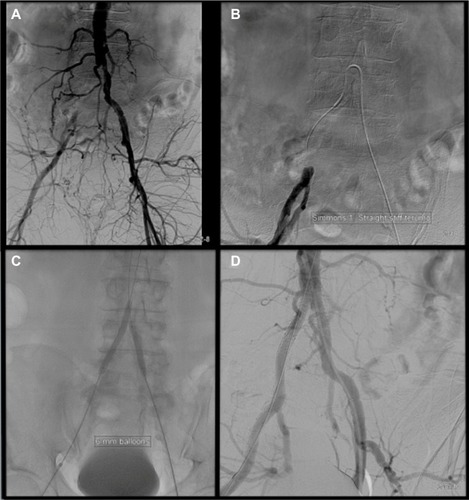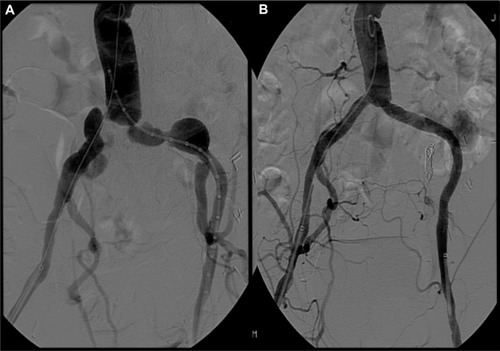Figures & data
Table 1 Major studies of currently available iliac artery stents
Table 2 Commercially available stents for aortoiliac disease, with associated sizing
Table 3 Advantages and disadvantages of iliac artery stent types
Figure 1 Balloon-expandable stent placement for treatment of bilateral common iliac artery disease.

Figure 2 Self-expanding stent placement for treatment of an occluded external iliac artery.

Figure 3 Revascularization of aneurysmal common iliac arteries with covered stents.

